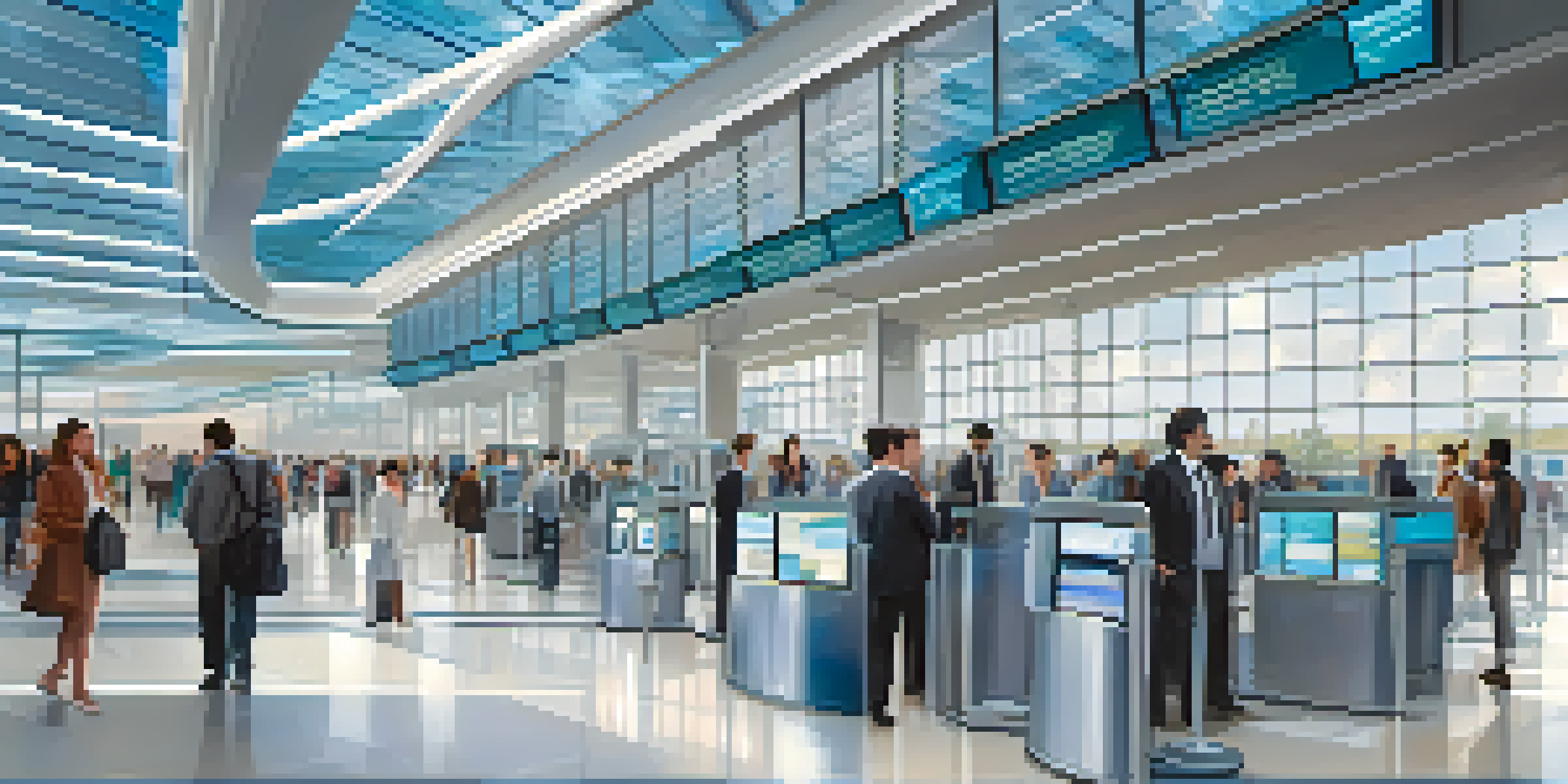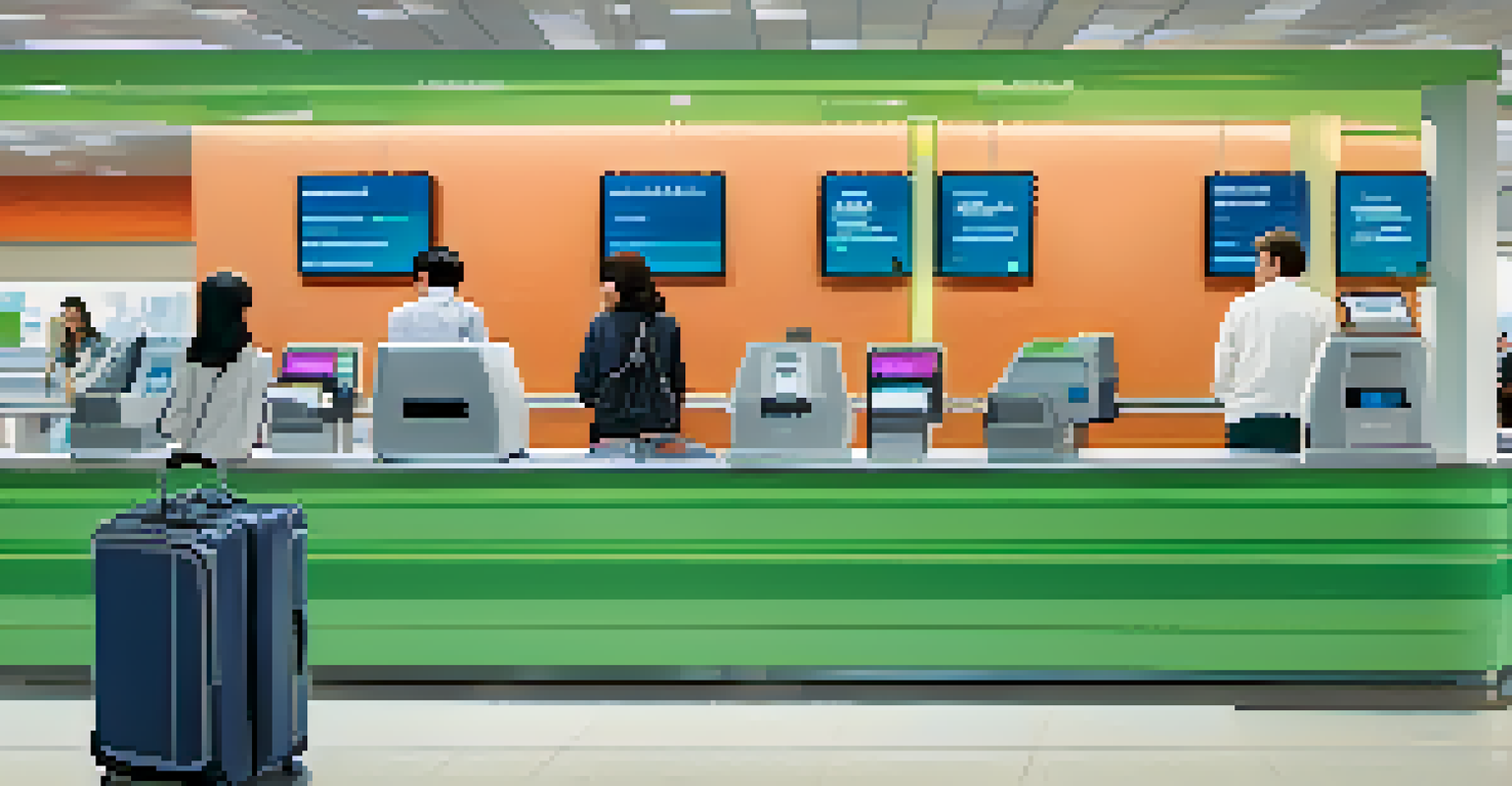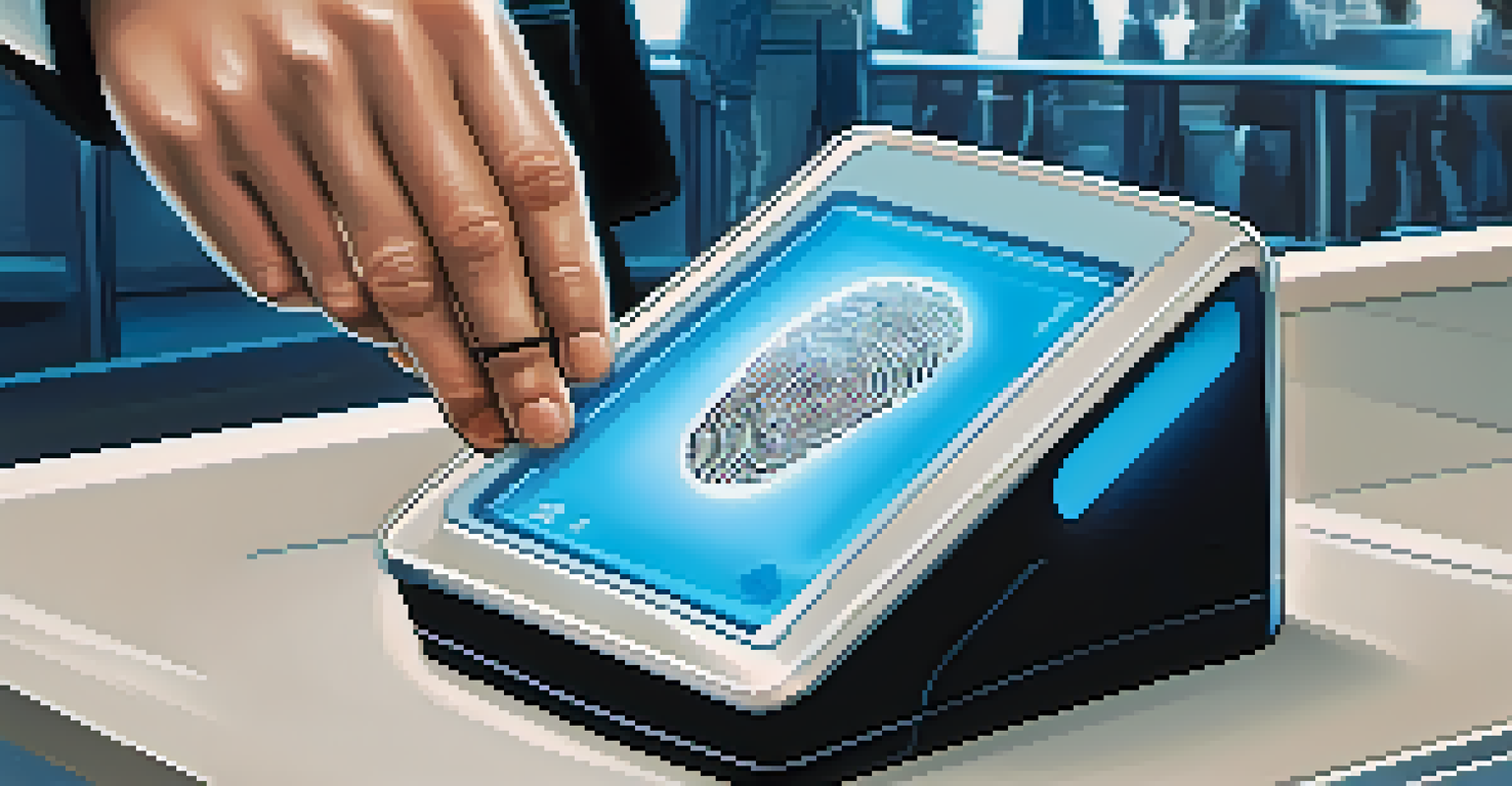Biometric Technology in Travel: Enhancing Passenger Security

Introduction to Biometric Technology in Travel
Biometric technology is revolutionizing how we travel today. By using unique physical characteristics, such as fingerprints or facial recognition, it offers a seamless way to verify passenger identity. This technology not only enhances security but also improves the overall travel experience by reducing wait times.
The future of travel lies in the seamless integration of technology, making experiences smoother and more secure for passengers.
As airports and airlines adopt biometric systems, travelers can expect smoother check-ins and boarding procedures. Imagine walking through security without having to fumble for your ID or boarding pass. Instead, a simple glance at a camera or a quick fingerprint scan can get you through in seconds!
The integration of biometric technology into travel is not just a trend; it's becoming a standard practice aimed at creating a safer and more efficient environment for passengers globally.
How Biometric Technology Works
At its core, biometric technology relies on capturing and analyzing unique human traits. For instance, facial recognition systems take a photo of your face and compare it to a stored image in a database. This process ensures that only authorized individuals can access specific areas of an airport or board a flight.

Similarly, fingerprint scanners work by reading the unique patterns found on your fingertips. These patterns are then converted into a digital format that can be quickly matched against stored records. This technology is not only fast but also incredibly reliable, making it a preferred choice for security check-ins.
Biometrics Enhance Travel Security
Biometric technology enhances passenger security by using unique physical traits, making it difficult for unauthorized individuals to access secure areas.
By combining multiple biometric modalities, such as facial recognition and iris scanning, travel companies can create a multi-layered security approach. This not only enhances accuracy but also helps in minimizing the chances of identity fraud.
Enhancing Passenger Security with Biometrics
One of the primary benefits of biometric technology is its ability to enhance passenger security significantly. Traditional methods of identification, like passports, can be easily forged, whereas biometric traits are unique to each individual. This makes it much harder for unauthorized persons to board flights or access secure areas.
Biometrics is not just a trend; it's becoming a standard practice aimed at creating a safer and more efficient environment for all.
Moreover, biometric systems can quickly identify individuals on watchlists or those who pose a security threat. By cross-referencing biometric data with law enforcement databases, airports can react swiftly to potential risks, ensuring the safety of all travelers.
In essence, biometric technology acts as a robust line of defense against security breaches, giving both passengers and airport authorities peace of mind.
Speeding Up the Travel Process
Biometric technology is not just about security; it's also about speed. Long lines at security checks can be a traveler's worst nightmare, but biometric systems help alleviate this issue. With quick identification methods, passengers can breeze through airports without the cumbersome process of showing IDs and boarding passes repeatedly.
For example, some airports have introduced biometric gates that open automatically once a passenger's identity is verified. This not only speeds up the boarding process but also results in a more pleasant travel experience overall.
Streamlining Travel Processes
Biometric systems speed up the travel process, allowing passengers to move through airports quickly without repeatedly showing IDs or boarding passes.
The ability to streamline processes through biometrics means travelers can spend less time waiting and more time enjoying their journey, which is a significant improvement in modern travel.
The Role of Airlines in Adopting Biometrics
Airlines play a crucial role in the adoption of biometric technology within the travel industry. Many are actively investing in biometric systems to enhance their services and improve security measures. By integrating these technologies into their operations, airlines can offer passengers a more seamless experience from check-in to boarding.
For instance, some airlines have introduced facial recognition technology at check-in counters, allowing passengers to check in simply by looking at a camera. This innovation not only speeds up the process but also reduces the need for physical contact during the check-in process.
As more airlines embrace biometrics, we can expect a shift towards a more efficient travel environment, with fewer delays and enhanced security.
Challenges and Concerns with Biometric Systems
While biometric technology offers numerous advantages, it also comes with challenges and concerns. Privacy is a significant issue; many travelers worry about how their biometric data is collected, stored, and used. Ensuring robust data protection measures is crucial for gaining passenger trust.
Additionally, the technology is not infallible. There are concerns about accuracy, especially in facial recognition systems that may struggle with certain lighting conditions or angles. This can lead to false positives or negatives, which could frustrate travelers.
Airlines Drive Biometric Adoption
Airlines are actively incorporating biometric technology to provide a seamless travel experience, improving efficiency from check-in to boarding.
To address these challenges, it’s essential for the industry to prioritize transparency and continuous improvement in biometric systems, ensuring they are both effective and respectful of passenger rights.
The Future of Biometric Technology in Travel
Looking ahead, the future of biometric technology in travel appears promising. As advancements in technology continue, we can expect even more accurate and efficient systems. Innovations such as AI and machine learning will likely enhance biometric capabilities, making them more user-friendly and reliable.
Moreover, as global travel resumes post-pandemic, the demand for contactless solutions will drive further adoption of biometric systems. Passengers will increasingly seek ways to minimize physical interactions, making biometrics a go-to solution.

In conclusion, the integration of biometric technology in travel is set to reshape the industry, creating a safer, faster, and more enjoyable experience for travelers worldwide.